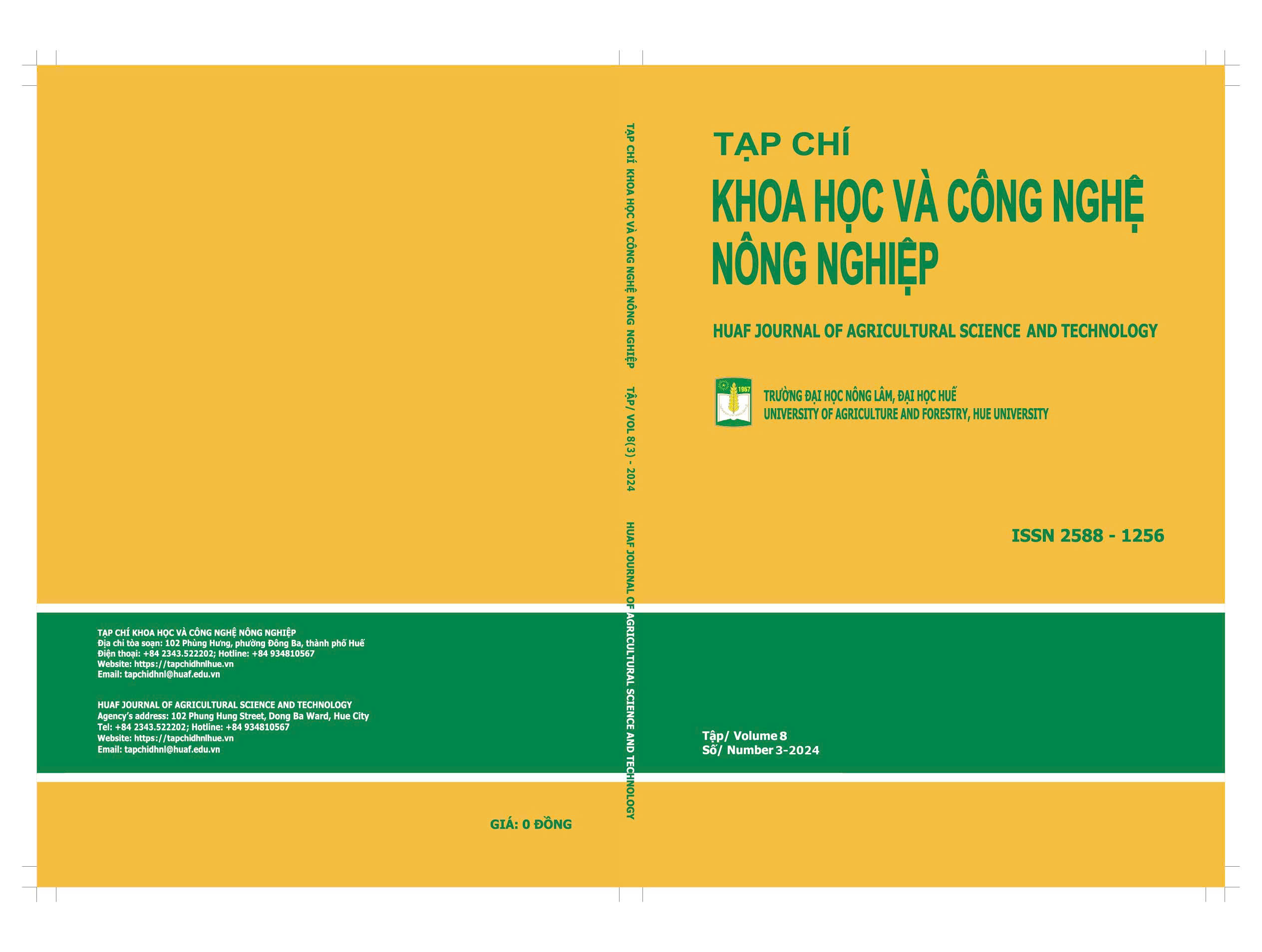##plugins.themes.huaf_theme.article.main##
Abstract
This study investigates the impacts of climate change on cassava cultivation in the districts of Ea Kar and Krong Bong, Dak Lak province, as well as the adaptation strategies employed by farming households. Data was gathered through in-depth interviews with key informants, group discussions, and household surveys. The results revealed that climate change has significantly affected cassava production, with instances of severe heat stress, prolonged drought, heavy end-of-season rainfall, and abnormal weather patterns. These phenomena have notably hindered cassava growth, development, and yield, with irregular heavy rainfall causing root rot and diminishing root quality and market prices. Despite various adaptation strategies implemented by farmers in the study area, the adoption rate remains low due to barriers such as limited knowledge, financial constraints, labor shortages, and uncertainty regarding the returns on adaptation investments. Additionally, farmers’ perception of cassava as a subsistence rather than a cash crop has deterred investment. The study highlights the reliance on traditional production techniques and emphasizes the need for policy interventions to enhance cassava cultivation efficiency in the face of climate change, aiming to foster sustainable cassava production areas in the Central Highlands, particularly in Dak Lak province.
##plugins.themes.huaf_theme.article.details##
References
Nguyễn Văn Minh và Đỗ Thị Nga. (2021). Ảnh hưởng của lượng phân bón và mật độ trồng đến năng suất và hiệu quả kinh tế của giống sắn HLS14 tại tỉnh Đắk Lắk. Tạp chí Khoa học Trường Đại học Tây Nguyên, 50, 65-75.
Nguyễn Hải Vân, Nguyễn Xuân Lâm và Nguyễn Việt Dũng. (2015). Mối quan hệ bất hoà? phát triển cây sắn- sinh kế người dân và tài nguyên rừng." Trung tâm Con người và Thiên nhiên (PanNature) và Tổ chức Forest Trends. https://nature.org.vn/vn/wp-content/uploads/2015/08/PAN_FT_Seminar_CassavavsForestProtection_Report_17072015_Final.pdf.
UBND tỉnh Đắk Lắk. (2024). Tình hình hạn hán, thiếu nước trên địa bàn tỉnh Đắk Lắk. Truy cập tại https://daklak.gov.vn/-/tinh-hinh-han-han-thieu-nuoc-tren-ia-ban-tinh
Anyaegbu, C. N., Okpara, K. E., Taweepreda, W., Akeju, D., Techato, K., Onyeneke, R. U., Poshyachinda, S., & Pongpiachan, S. (2023). Impact of Climate Change on Cassava Yield in Nigeria: An Autoregressive Distributed Lag Bound Approach. Agriculture, 13, 80.
Apinan, P. (2018). Economic impact assessment of climate change on cassava production. International journal of Humanities, Social sciences and Arts, 11, 272-285.
CGIAR-SEA. (2016). The drought crisis in the Central highlands of Vietnam: Assessment Report. CGIAR Research Program on Climate Change, Agriculture and Food Security- Southeast Asia. Hanoi, Vietnam. Retrieved from https://cgspace.cgiar.org/items/c2604ff9-d885-430e-82e7-f674b0568741.
Dak Lak PPC. (2023). Socio-economic developemt report of the year 2022. The provincial people committee of Dak Lak. https://dbnd.daklak.gov.vn/."
Đào Lê Trang Anh, Nguyễn Tuấn Anh & Abbas Ali Chandio. (2023). Climate change and its impacts on Vietnam agriculture: A macroeconomic perspective. Ecological Informatics, 74, 101960. DOI: 10.1016/j.ecoinf.2022.101960
Graziosi, I., Minato, N., Alvarez, E., Ngo, D., Hoat, T., Aye, T., Pardo, J., Wongtiem, P., & Wyckhuys, K. (2016). Emerging pests and diseases of South-east Asian cassava: A comprehensive evaluation of geographic priorities, management options and research needs. Pest management science, 72, 1071-1089.
GSO. (2023). Socio- Economic situation of Vietnam in the fourth quarter 2020 and the whole year 2019. General Statistics Office of Vietnam. P463.
Hoàng Kim., Nguyễn Thị Trúc Mai., Nguyễn Bạch Mai & Howeler, R. H. (2015). Cassava conservation and sustainable development in Vietnam. In “Sustainable cassava production in Asia for multiple uses and for multiple markets“The 9th Regional Cassava Workshop. (R. H. Howeler, ed.). CIAT, Guangxi, China.
Lindegaard, L. S., & Sen, L. T. H. (2022). Everyday adaptation, interrupted agency and beyond: examining the interplay between formal and everyday climate change adaptations. Ecology and Society, 27.
MARD. (2022). Worthy strategies needed for casava sustainable development. MARD- Hanoi. Retrieved from https://vietnamagriculture.nongnghiep.vn/worthy-strategies-needed-for-cassava-sustainable-development-d320200.html.
Nui, N., Bien, V., Trung, N., Lua, T., Cuong, N., Spillane, C., Brychkova, G., & McKeown, P. (2021). Cassava Farmers’ Perception on Climate Change: A Case Study in Van Yen District, Yen Bai Province. Vietnam Journal of Agricultural Sciences, 3, 700-711.
Pipitpukdee, S., Attavanich, W., & Bejranonda, S. (2020). Impact of Climate Change on Land Use, Yield and Production of Cassava in Thailand. In “Agriculture”, 10(9), 402. DOI: 10.3390/agriculture10090402.

